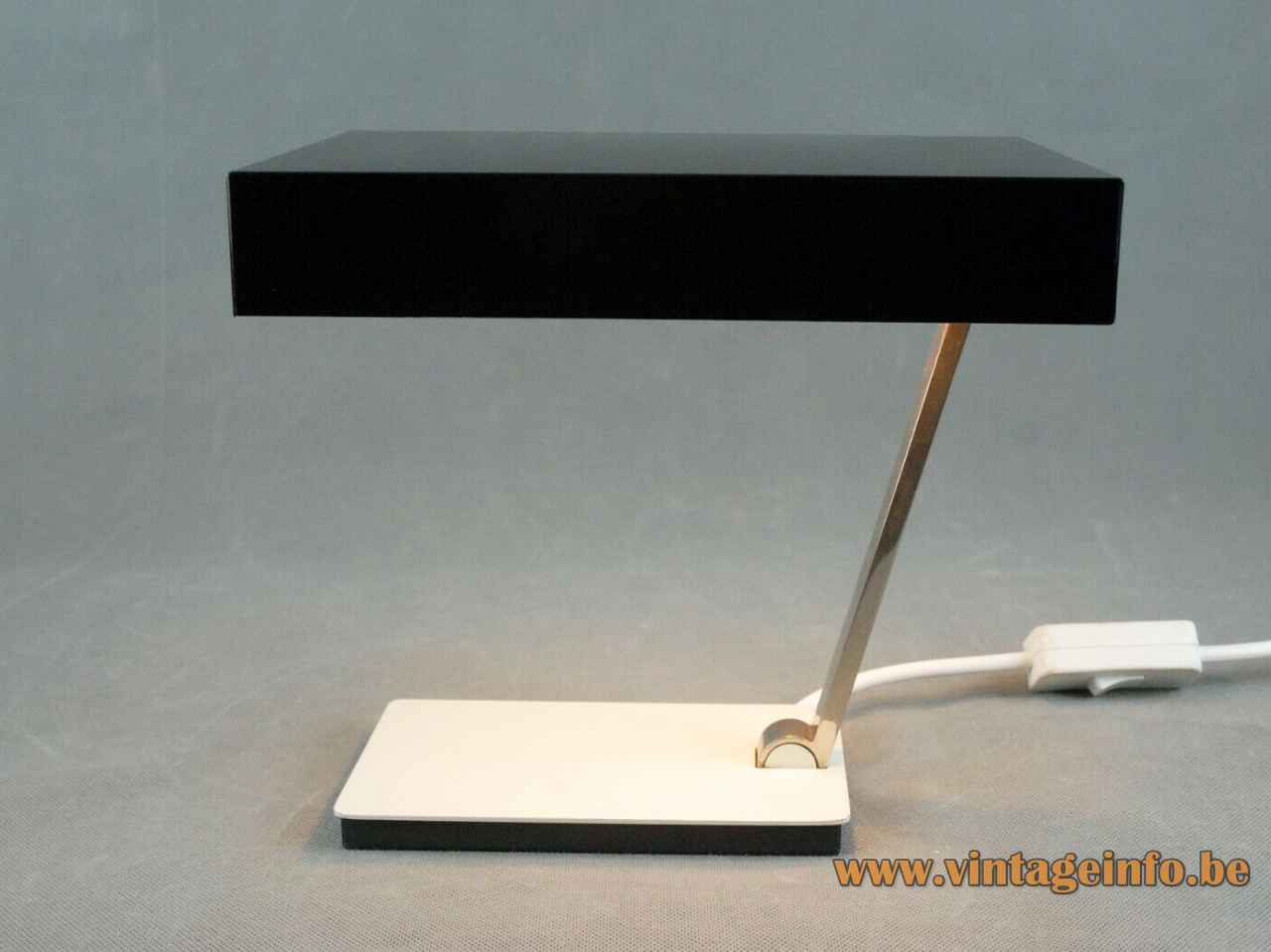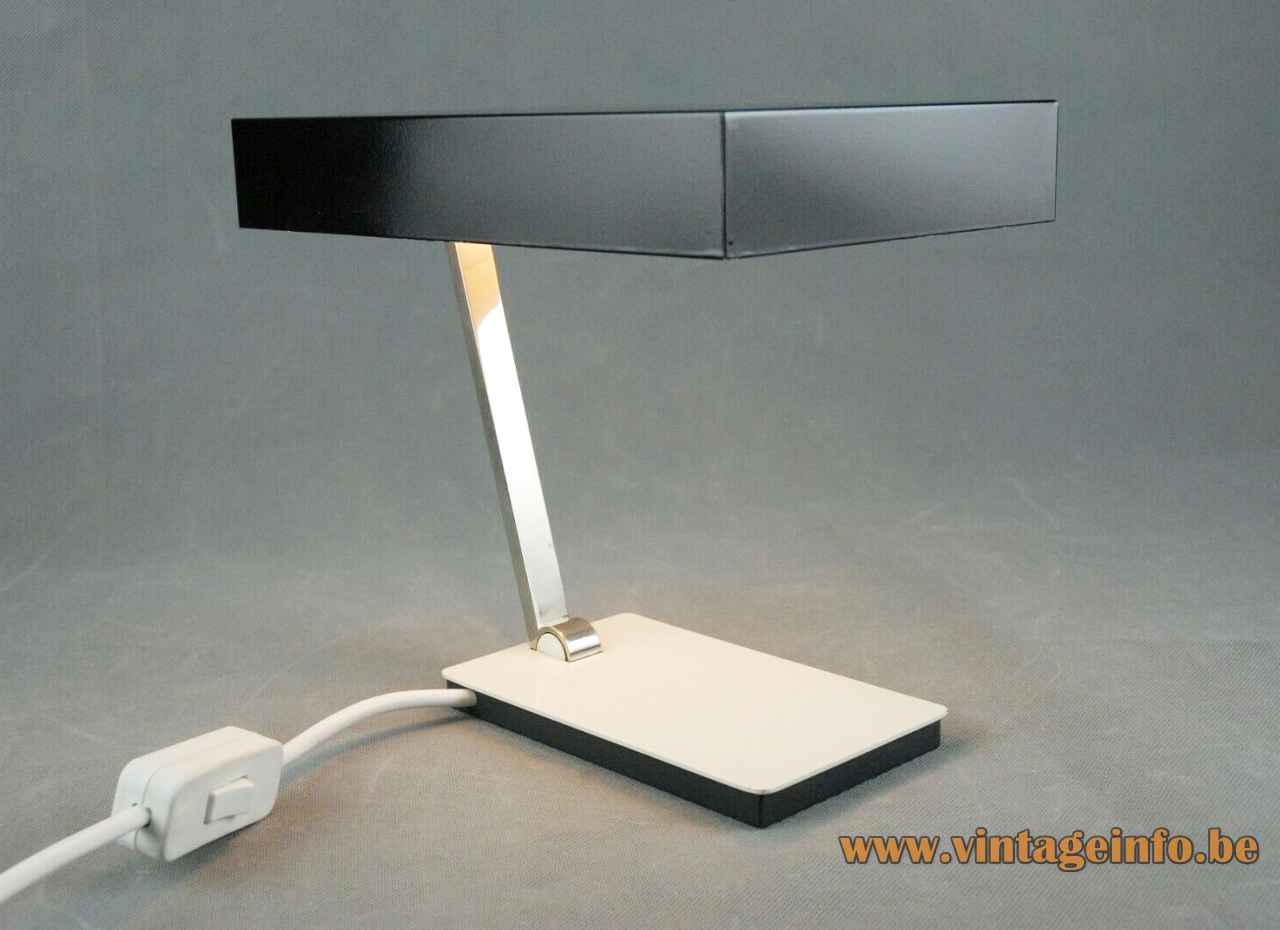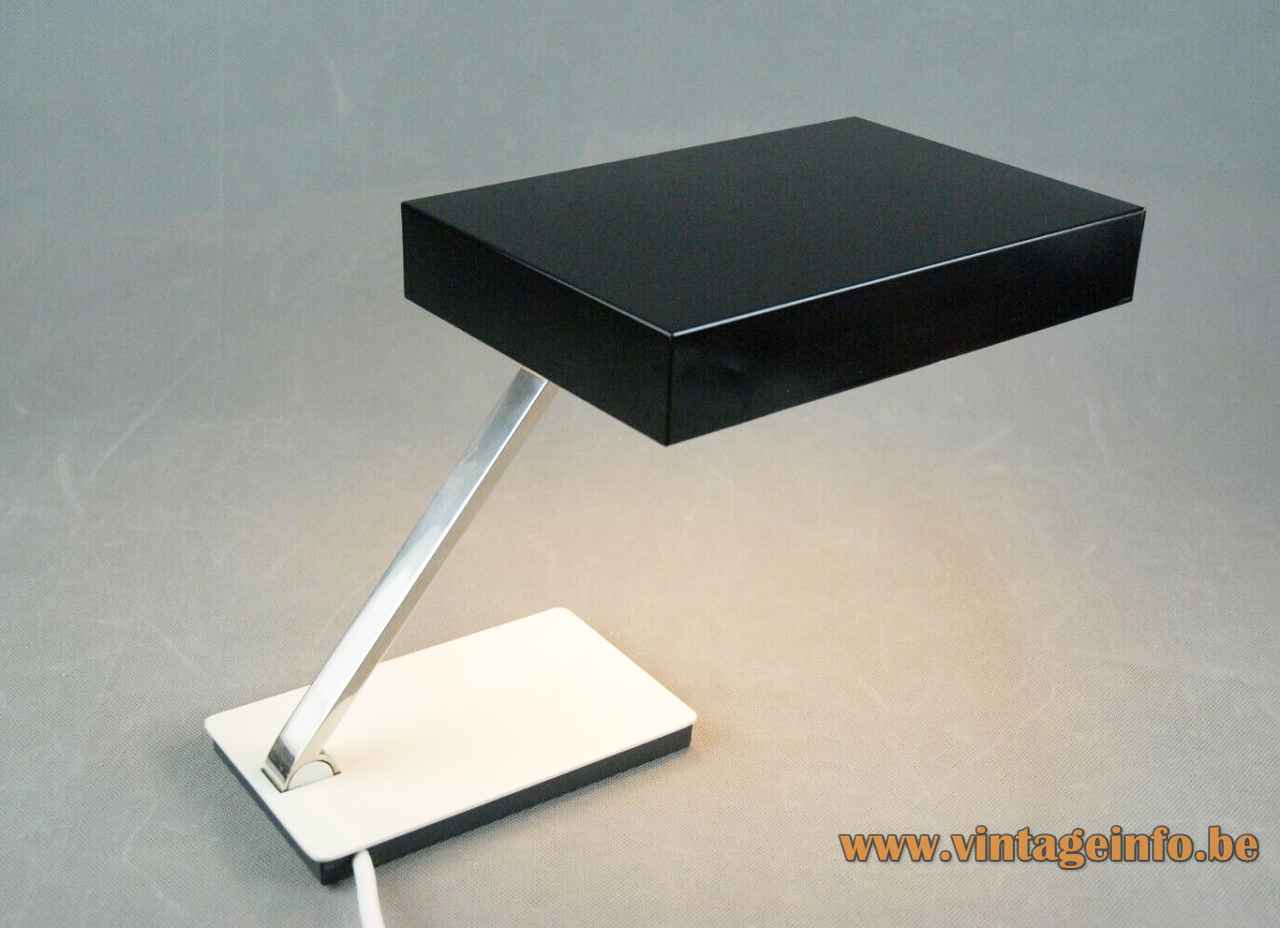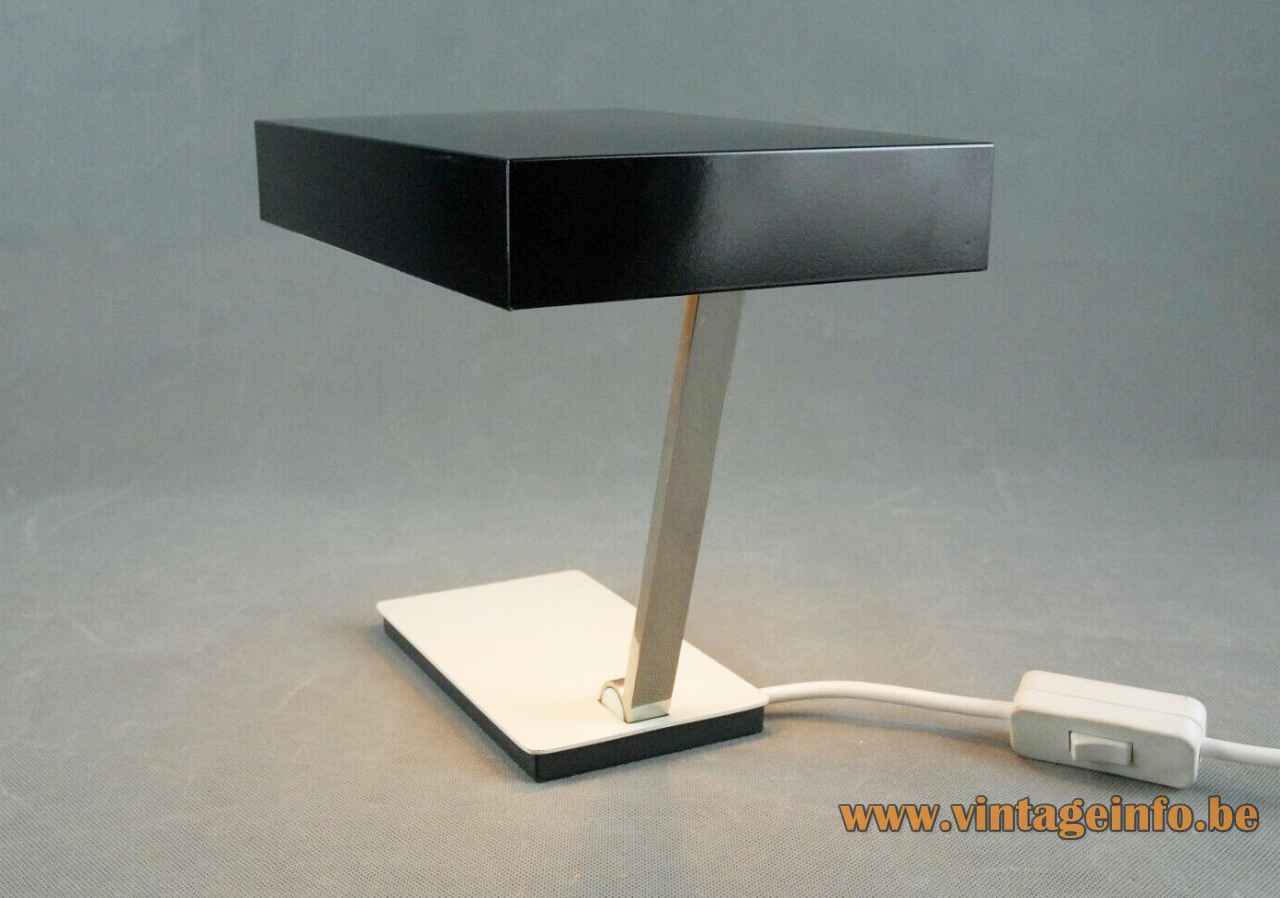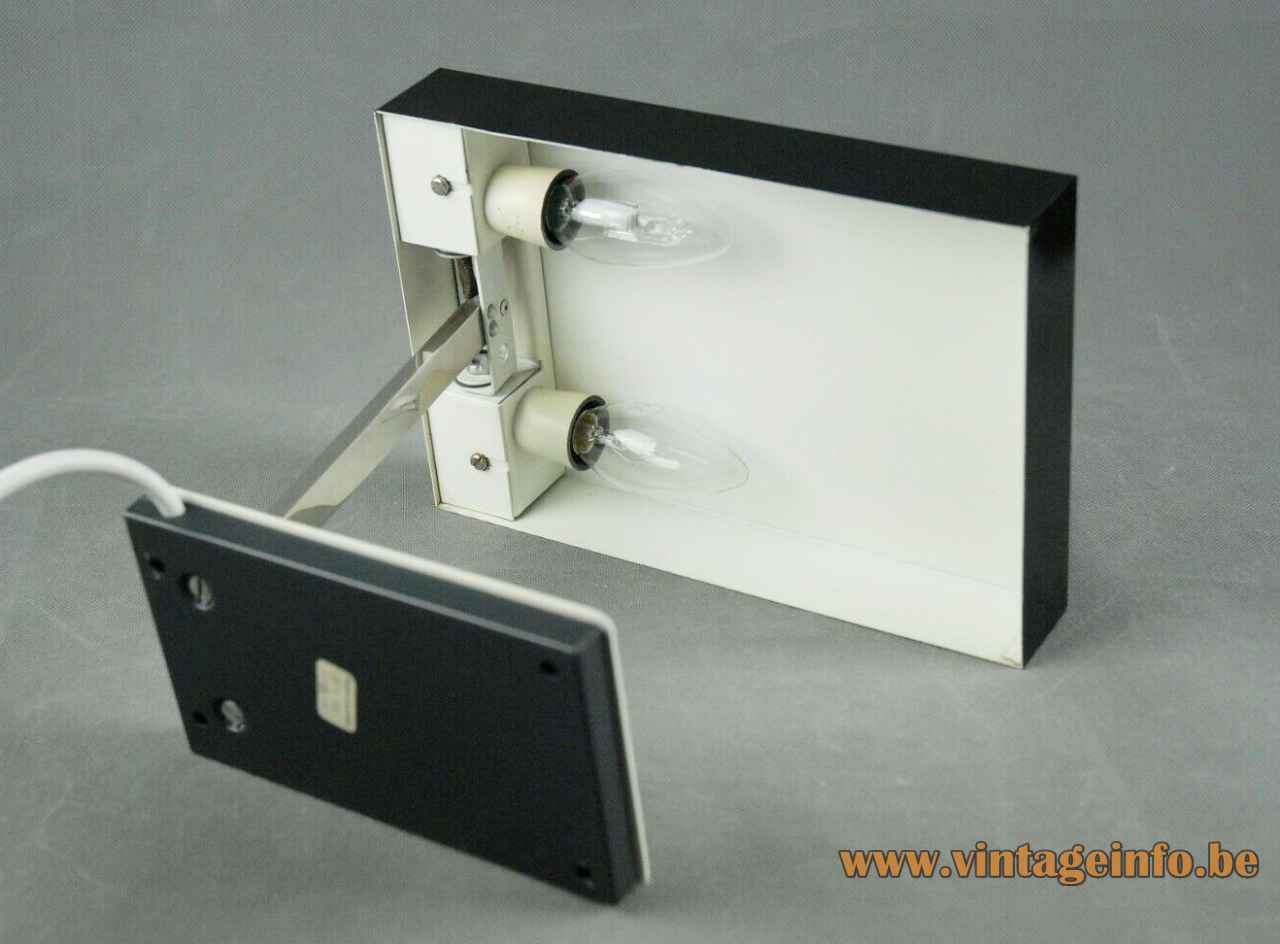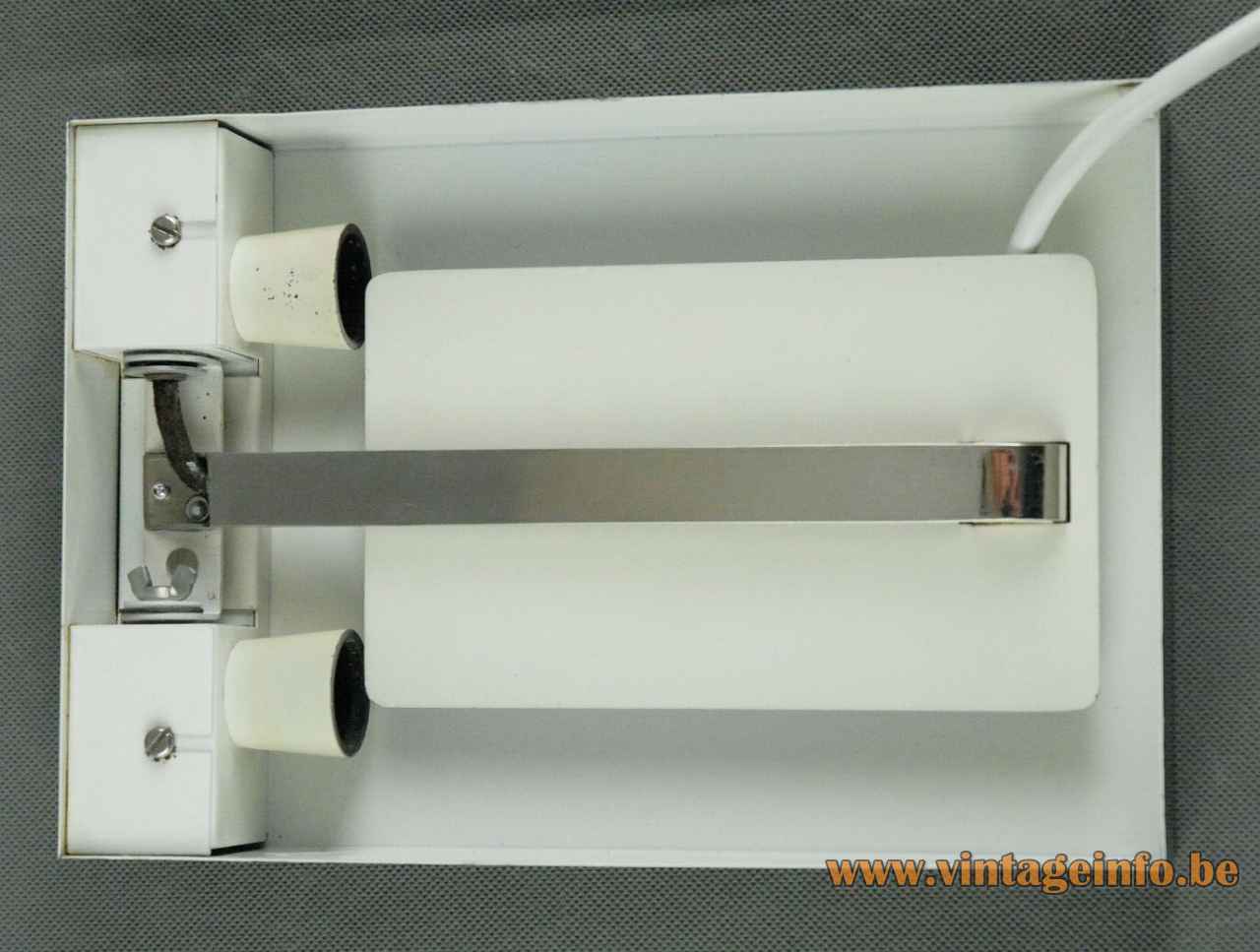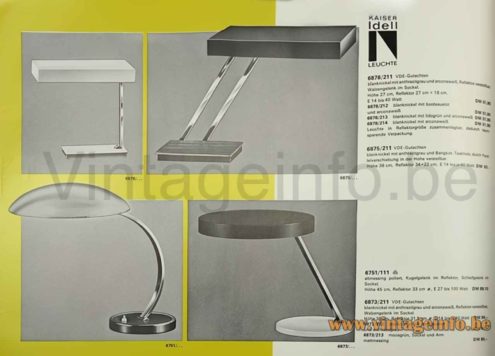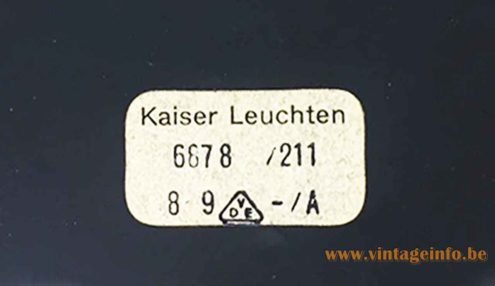Kaiser Leuchten Desk Lamp 6878 – Catalogue Picture
Here together with models 6875, 6751 and 6873.
Kaiser Leuchten Desk Lamp 6878 – Label
Many thanks to Craig from From our house to Bauhaus for the beautiful pictures. You can find his shop on Ebay over here.
Kaiser Leuchten Desk Lamp 6878
Materials: Rectangual white painted metal base. Black painted bottom. Cast iron counterweight inside. Adjustable chrome slat. Black painted rectangular aluminium lampshade, painted white inside. 2 white painted Bakelite E14 sockets.
Lampshade: 26 x 17 cm / 10.23 x 6.69”
Height: 24 cm / 9.44” – adjustable
Base: 18 x 11 cm / 7.08 x 4.33”
Electricity: 2 bulbs E14, 2 x 40 watt maximum, 110/220 volt.
Any type of light bulb can be used, not a specific one preferred.
Period: 1960s, 1970s – Mid-Century Modern.
Designer: Klaus Hempel.
Manufacturer: Gebr. Kaiser & Co. Leuchten KG, Lichttechnische Spezialfabrik (Light technical special factory), Neheim-Hüsten, Germany.
Other versions: This Kaiser Leuchten desk lamp 6878 exists in several colours. Klaus Hempel designed several lamps like this one in the 60s and 70s for Kaiser Leuchten. Also floor lamps exists with similar lampshades.
Klaus Hempel
Architect Klaus Hempel designed many lamps for Kaiser Leuchten. Several of his designs received awards. He also designed beautiful lamps for the Hustadt-Leuchten company, also from Germany. On of the most famous lamps he designed for Kaiser Leuchten in 1972, model 07030, was copied by Massive from Belgium.
Gebr. Kaiser & Co. Leuchten KG
Gebr. Kaiser & Co. Leuchten KG, Lichttechnische Spezialfabrik, Neheim-Hüsten was founded by Hermann Kaiser, who came to Neheim as a worker from Heddinghausen. With a brother and a participant, he became self-employed in 1895.
At the beginning, the company concentrated on the production of nickel-plated and copper-plated lamp parts for the already existing lighting factories. The economic breakthrough came with the development of a very cheap petroleum lamp made of tinplate. During the First World War the production was converted to war materials such as storm batons.
After the war, the manufacture of electric lighting fixtures was expanded, and finally the whole branch of the business was transferred. During the period between the two world wars, the company developed into one of the largest lighting manufacturers in the region. not in the least thanks to the lamps designed by Christian Dell.
As early as 1934 the number of workers was 350. This figure increased to about 600 to 700 employees until the beginning of the Second World War.
During the Second World War the production plants were completely destroyed. After the war a strong enterprise expansion began. Between 750 and 1000 people were temporarily employed.
Towards the end of the 1970s the company was acquired by Thorn Lighting Group. This became the property of an international investment company in 1993, and the remnants of production were transferred to Dortmund in 2000.
Several working lamps/desk lamps designed by Christian Dell are still in production and made by Fritz Hansen.
